Reflections - Volume One
Sofía Clausse - ▄▀█▐▄▀▐ (2019)
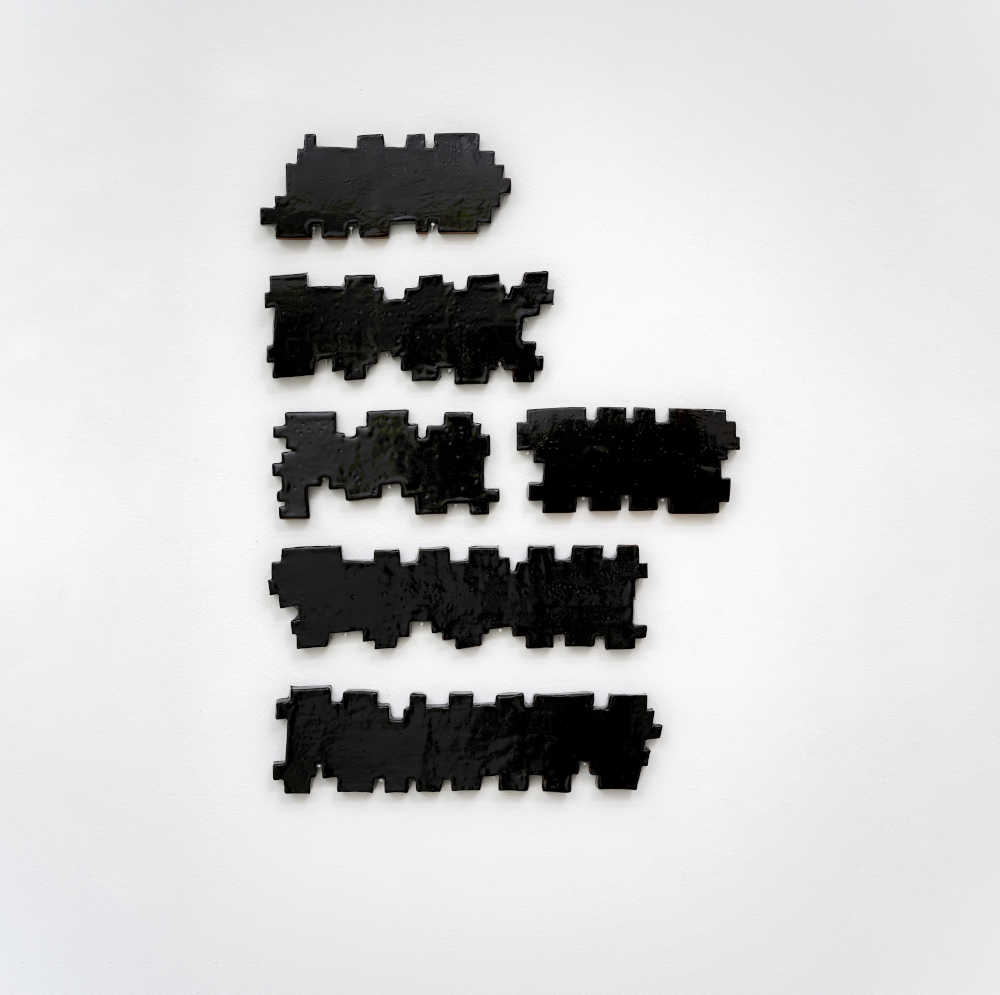
"These black-glazed ceramic pieces came from my thinking about the essence of words, and how to translate materials as if they were languages. The shapes are abstractions of words, arranged together as in a paragraph. The forms are created from tracing around the outline of words, and abstracting them further and further to reach these world-like shapes. S■█etimes they retain the ability to be read, but their legibility is pushed to the limit to remain with only their essence.
With these pieces, I've been thinking about translation, and how rather than translating from language to language, it can be done from material to mat▄▀ial. Using terracotta, I can explore this material's own limitations, such as the way it shrinks in the kiln, or the type of softened corners that it produces. Responding to these limitations is like finding the handwriting of clay.
During my formal studies on typography, I was taught how to see letterforms carefully by simultaneously looking and not looking at letters. By focusing on things like the negative forms, or the spaces between letters and between w▀rds, I was trained to pay attention to the form and look beyond the letters, seeing and not reading, and understanding how words change their evoked meaning depending on the form and arrangement of the letters.
With these pieces I've been questioning what else can w■rds be, how else can they behave, and how I can invent my own lett▀rforms and ways of writing and reading that follow █y own rules of lang▄▀ge, translation,▐nd writing, while looking at █aterials and its transf■r█ation as a way of translation. ▌█ou▄h▐he pl▄▀ts and▐o■k for th■ █o▀▄h ▐he pl▄▀▐s a▀d ▐o■k fo▀ th■▐▀▄h ▐▐■ p▌▄▀▐s ▐▀d ▐■■k ▀o▀ th■ █▐▀▄■ ▐▐■ ■▌▄▀▐■ ▐▀▄ ▐■■█ ▀▄▀." - Sofía Clausse
Tommy Ramsay - Llorando (Club Silencio) (2021)
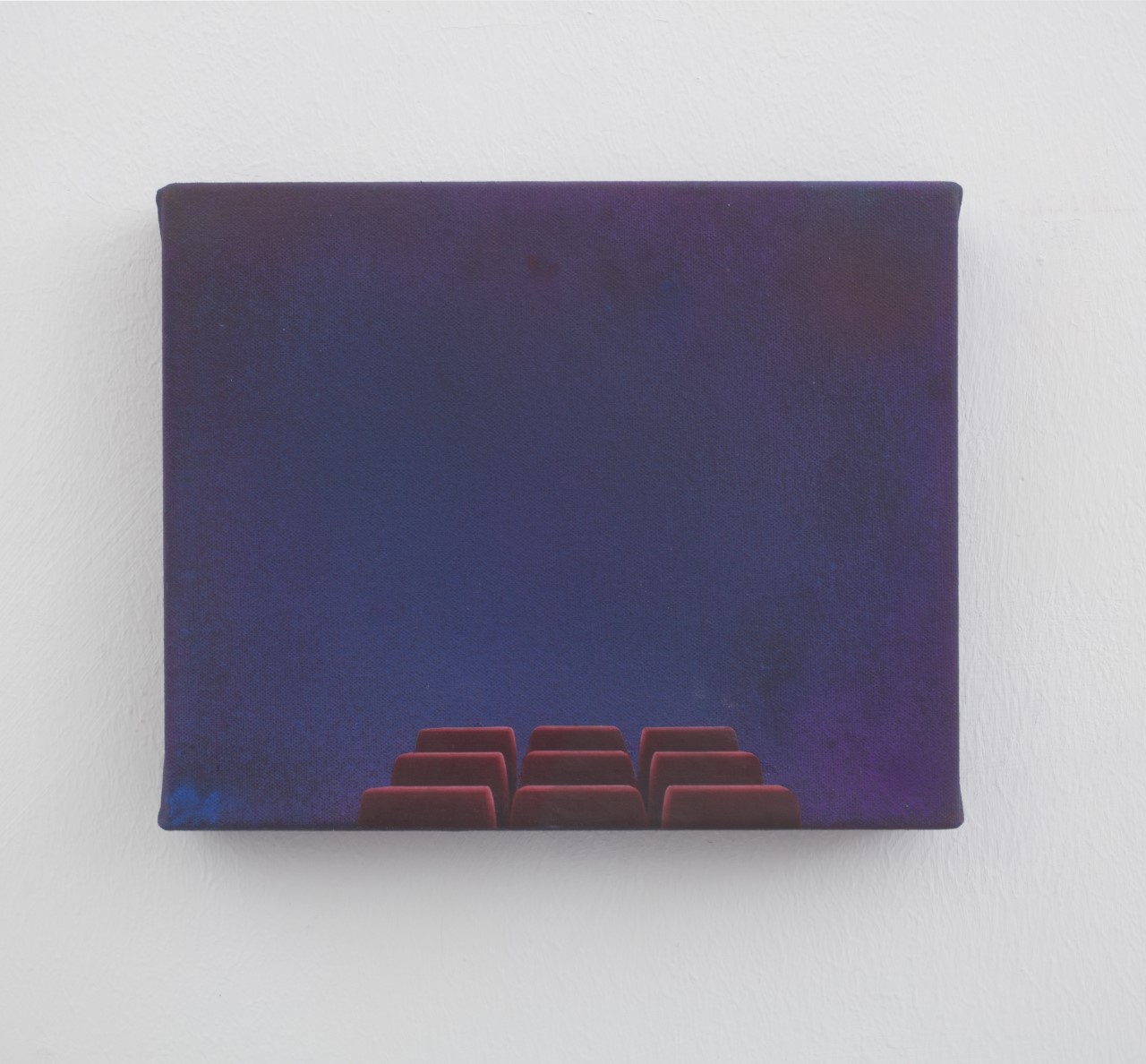
"This image was inspired by a scene in the David Lynch film Mulholland Drive. It is the scene in which Rebekah del Rio sings in Spanish a highly emotive and powerful version of the Roy Orbison song Crying. The song is performed on stage at an eerie theatre – Club Silencio, towards the songs crescendo del Rio collapses on stage but the song continues to play out. This collapsing of the act of performance, the personal and perceived reality makes me think of painting and the contrived nature of the act of painting. The artists’ knowing performance of the mechanisms and staged framework of painting, a production of marks that can at once be potent and simultaneously collapse back in on themselves. Both the performance of del Rio and the painter present to the audience what we recognise and know, but if we look a little closer, we can see that the surface of the performance or the painting is always cast in doubt." - Tommy Ramsay
Esther Merinero - Gateway II (2021)
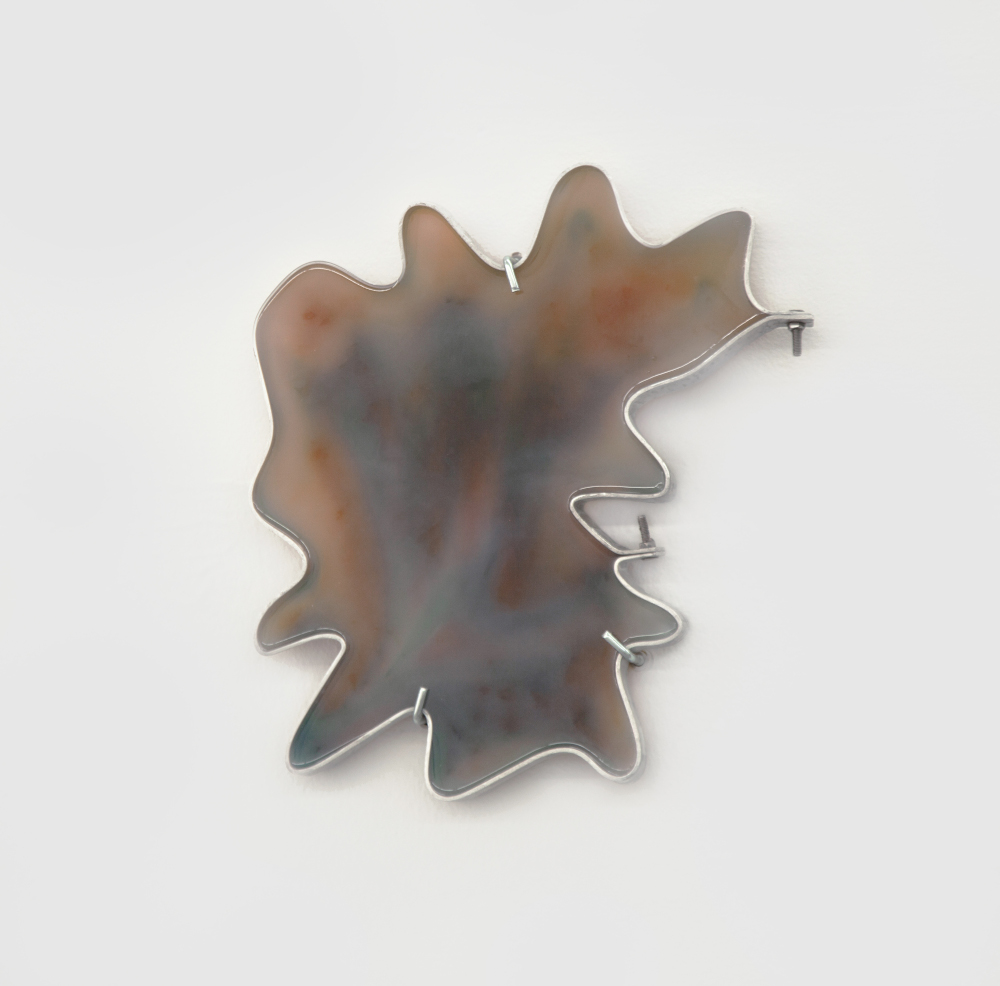
"Gateway II is revealed in a particular moment, during the humid state, or the raining one. From the lack of understanding (or bonding) of its densities (and bodies), a possibility arises: a portal opens onto the other side of the surface, opening only for a limited period of time.
~
The glancing game had started and it was over again. The eyes were shut, and remained shut. The eyelashes were frosty, stuck together, and I just wanted to blow into your eye to help it warm up and for the shutting out to melt. A small movement inside the eyelid, a hopeful motion, and there I was waiting for the hatching to take place. Glance, glaze, glaciar. And suddenly there was a crack in the skin, it split into two, and was followed by the lashes. It was nice to see that gap, and I jumped right into it. Coming here and blowing into your eye hadn’t been an easy task. It hadn’t though, sweat is porous, and hot and there is no interest in something which has the potential to become ice cold and freeze. “Ice cold baby, ice cold!”. I want something that remains fluid, that moves, that is willing to go down the creeks and is not going to suddenly freeze; or freak." - Esther Merinero
Alexandra Searle - And How Do You Feel, In Yourself? (2021)
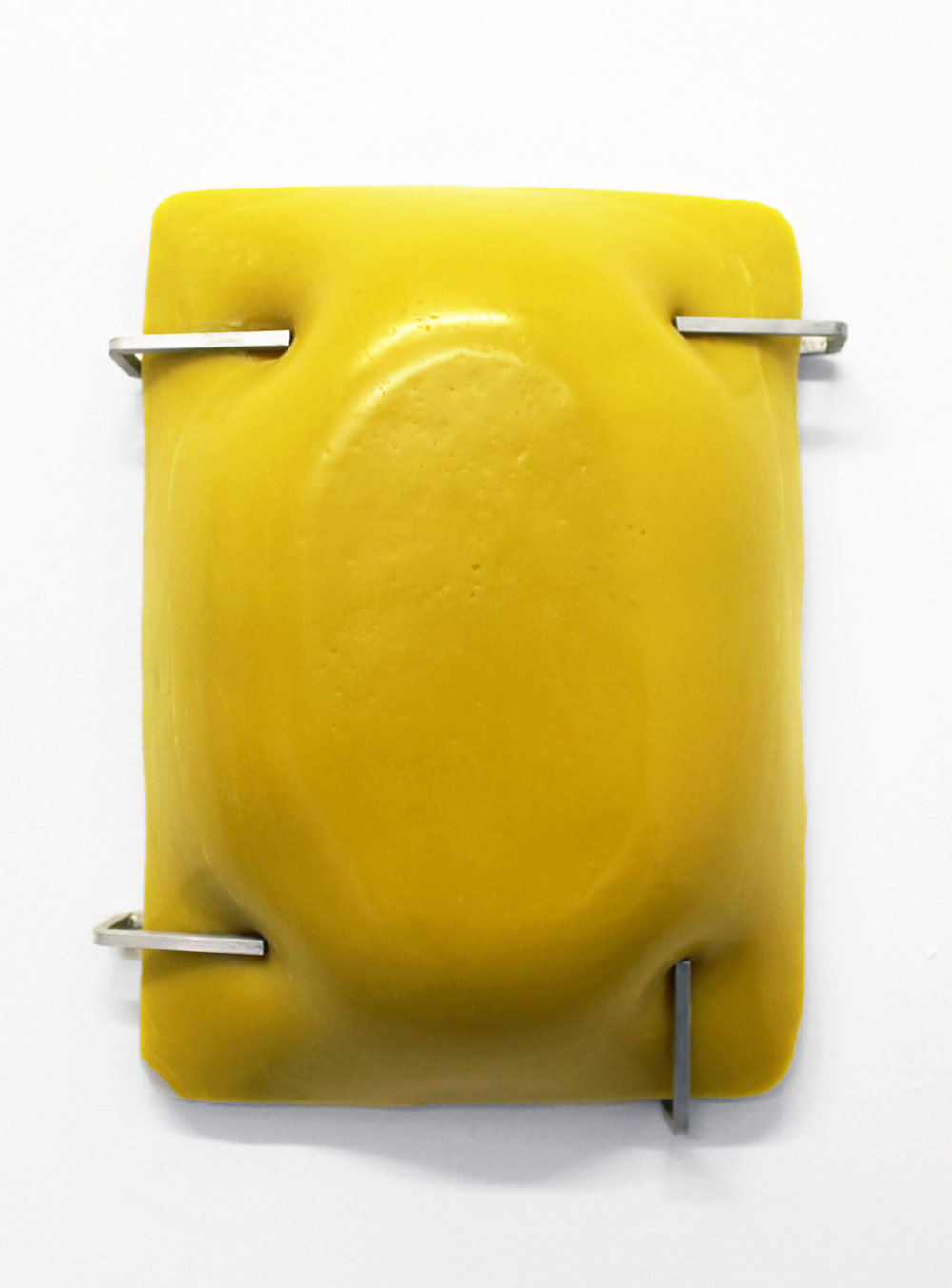
"Halfway between a painting and a sculpture, this work speaks of a cruel display; it is there at eye-level, just as a painting, to be viewed and scrutinised and looked at in detail. Poked, prodded and baring its all under the clinical aluminium staples holding it down, we examine it. Akin to how a bulging gut flattens when as its owner lies down, or the squashing of a specimen under a microscope’s glass slide, there is a vulnerability here; a yellow-bellied fear of exposing our most defenceless areas.
‘And how do you feel, in yourself’ is an odd, non-sensical question often asked in medical appointments, when trying to distinguish your overall physical or mental state from the specific reason for your medical appointment. Q: How do you feel? A: I have got earache. Q: And how do you feel in yourself? A: Fine.
Such subtle nuances in the English language fascinate me. We immediately read between the lines of this entirely existential question. Rather than ‘yourself’ being one entity, it suggests you are something separate that exists ‘within yourself’. A mind or soul, trapped within an all-too-often misfunctioning body.
And finally, there is the colour. The work is pure beeswax – hailed for its natural, calming and healing properties. Yellow, often happy and positive in other contexts, is also the colour of decay and mental illness. Gaining much of my inspiration from Charlotte Perkins Gillman’s classic short story The Yellow Wallpaper, I imagine this work as the same yellow as the protagonist’s wallpaper, which surrounds her as she descends into madness. Gillman writes, it is “a smouldering unclean yellow… It makes me think of all the yellow things I ever saw – not beautiful ones like buttercups, but old foul, bad yellow things.”" - Alexandra Searle
Josh Rowell - Virtually Fragile #4 (2018)
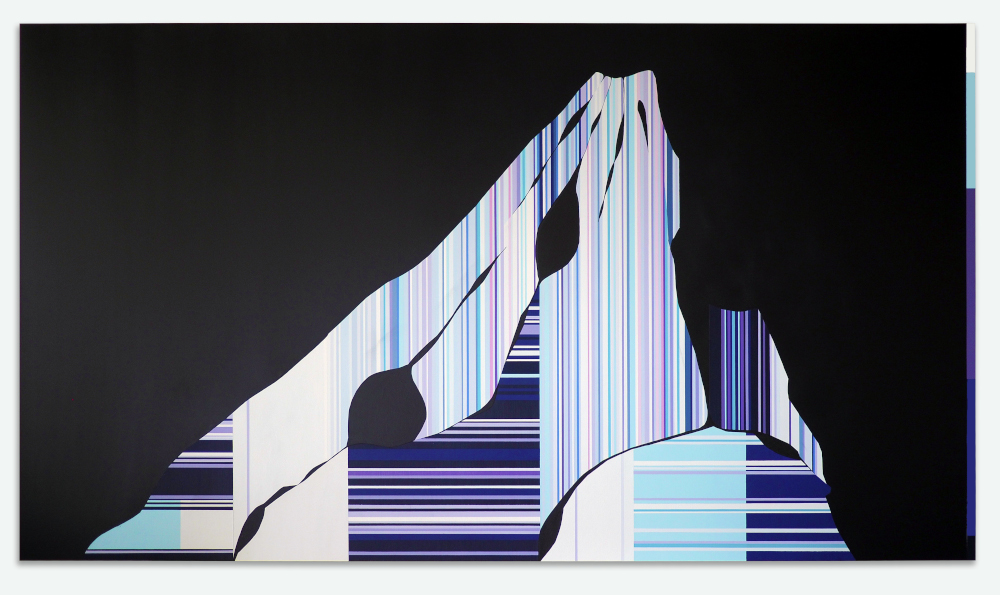
"‘Virtually Fragile #4’ is one of the earliest examples from a series of paintings that take inspiration from images of broken screens, resulting in digital landscapes of complex colour and form, simultaneously geometric and spontaneous in their composition. Working from found images of a variety of broken devices, I have sought to highlight the fact that the digital world, despite its seemingly limitless potential, still maintains a certain level of mortality. Like all things, our personal relationship with the virtual realm is temporal; as we enter into the digital world through our screens, the gateway through which we travel can just as soon be taken away from us with one false move, one simple drop of our phone. Ultimately, we can understand here that the digital world remains answerable to the physical world. The function of the screen in contemporary society lends itself naturally to my work. Screens represent the final barrier between our natural, tangible and potentially limited reality, and the intangible yet expansive realm of the virtual. Through painting broken screens I aim to take away from the common conception of ‘digital perfection’, and instead create a dialogue that is arguably more accurate, or 'real', than the falsehood of flawlessness. The series' title, ‘Virtually Fragile’, is inspired by the position we find ourselves in today. We give so much of our time to the internet and we are becoming increasingly reliant on these technologies, but we are never too far from losing it all. Hence the 'fragility' of the situation in some way reflects the fragility of the devices themselves." - Joshua Rowell
Alexander Glass - ‘…and how do you choose your form?’ (2021)
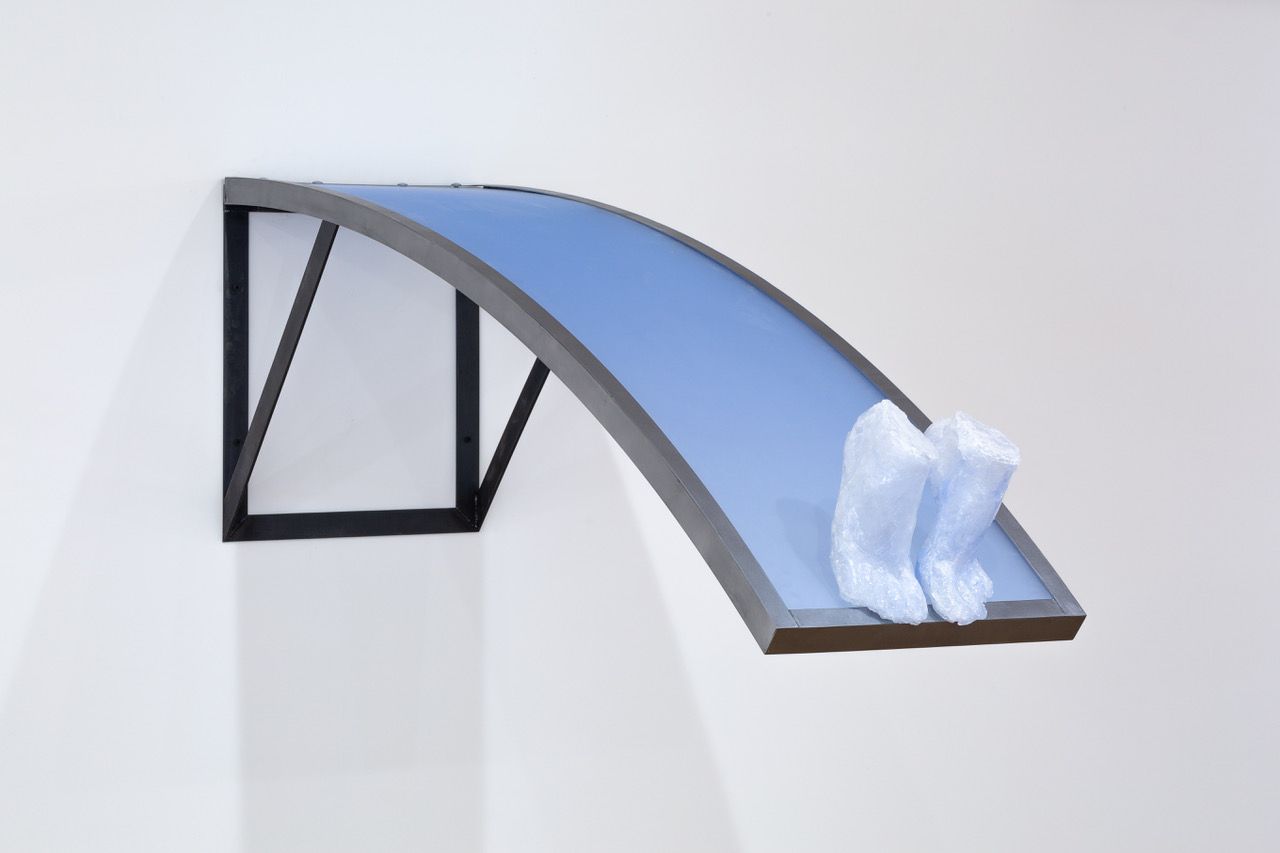
"The moment between thought and action, encapsulated in a concise and seductive image was the main intention for the sculpture “…and how do you choose your form?”. The desire for experience and possession of a moment is the way I understand creating sculpture. I would always hope that my work creates relationships with an audience through the uncanny nature of a false representation of understood physical situation, such as rippling on water or the sprung tension of a diving board, both held in time.
“…and how do you choose your form?” is the second curved diving board sculpture I have made, the first was for my first solo show ‘Standing on The Deep End,’ I wanted to create a new version of the work for my second solo show at Quench Gallery as a way of visualising my progression as an artist over the past 5 years. Sometimes I worry about the repetition of imagery as showing a lack of development, however I know this is trivial concern, one of the best parts of putting this work and show together during lockdown was taking the time to look back at past exhibitions and take stock of what I’ve loved making and what I thought was the most successful sculptures.
The diving board and swimming pools, to me, are representative of a place of desire and, sexual awakening, where bodies are sexualised through the legitimised scenario of physical activity. Pools are often used in cinema for this reason to show the first time that characters experience looking at their peers’ bodies and feeling self- conscious, attracted or ashamed. Being on the pedestal of a diving board, is to be watched, to be taking a leap and to transform your body into a shape that slips into the water. This work was shown as the lockdown at the beginning of 2021 started easing in spring, as a result this notion of transformation and action felt even more significant to me. This works physical and emotional themes are what I hope to carry forward into future projects as it feel like a concise statement of my sculptural excitement." - Alexander Glass
Published 03 Jun 2021
